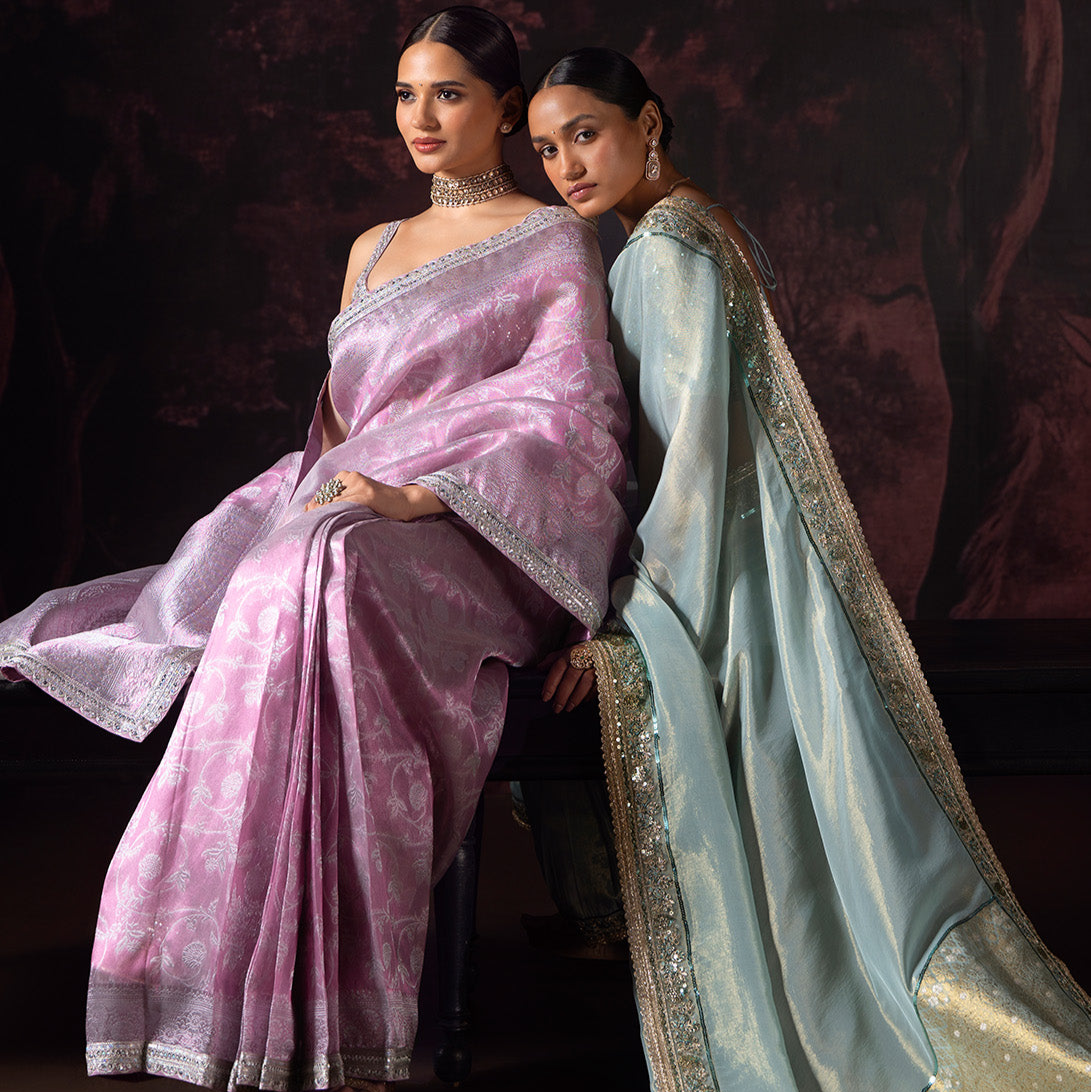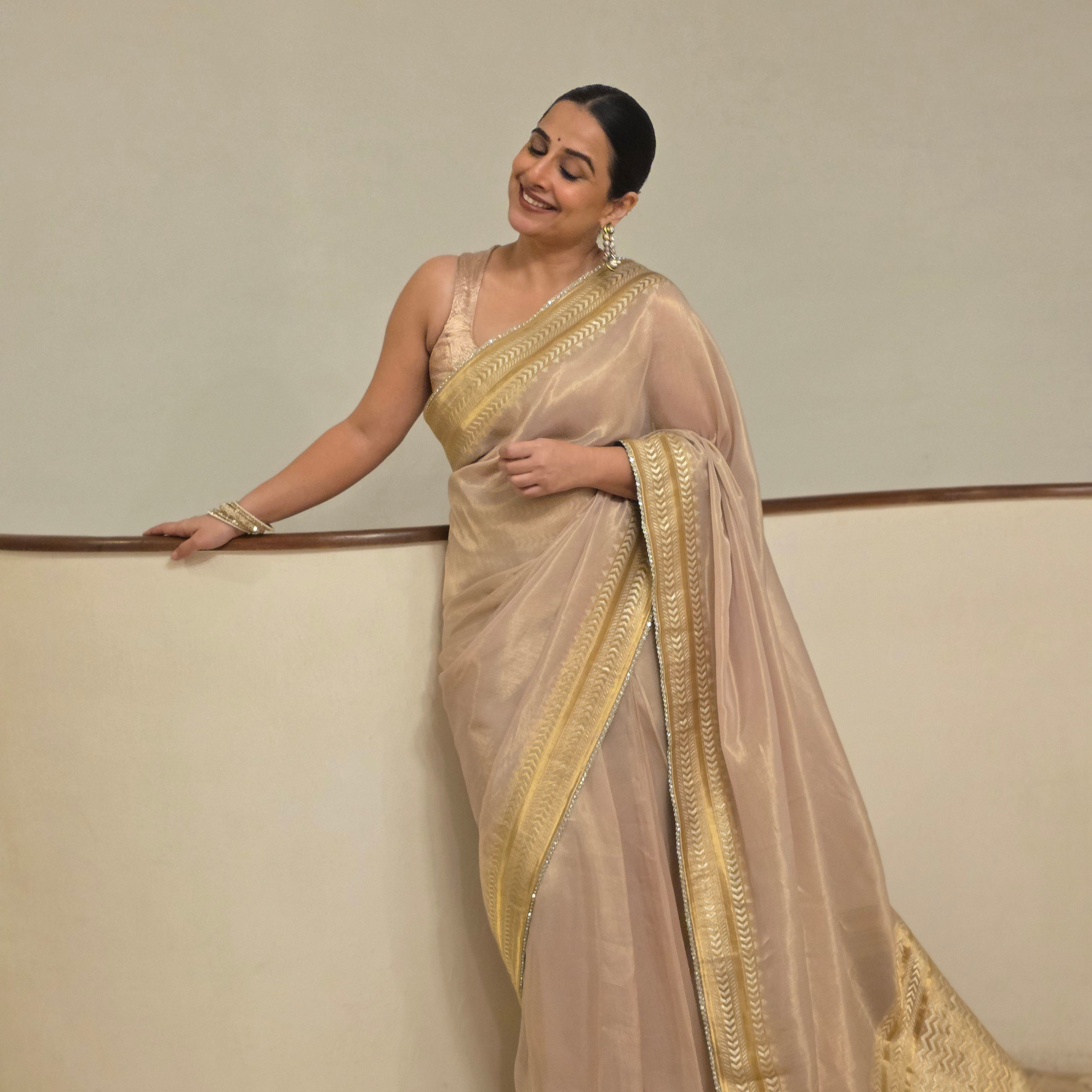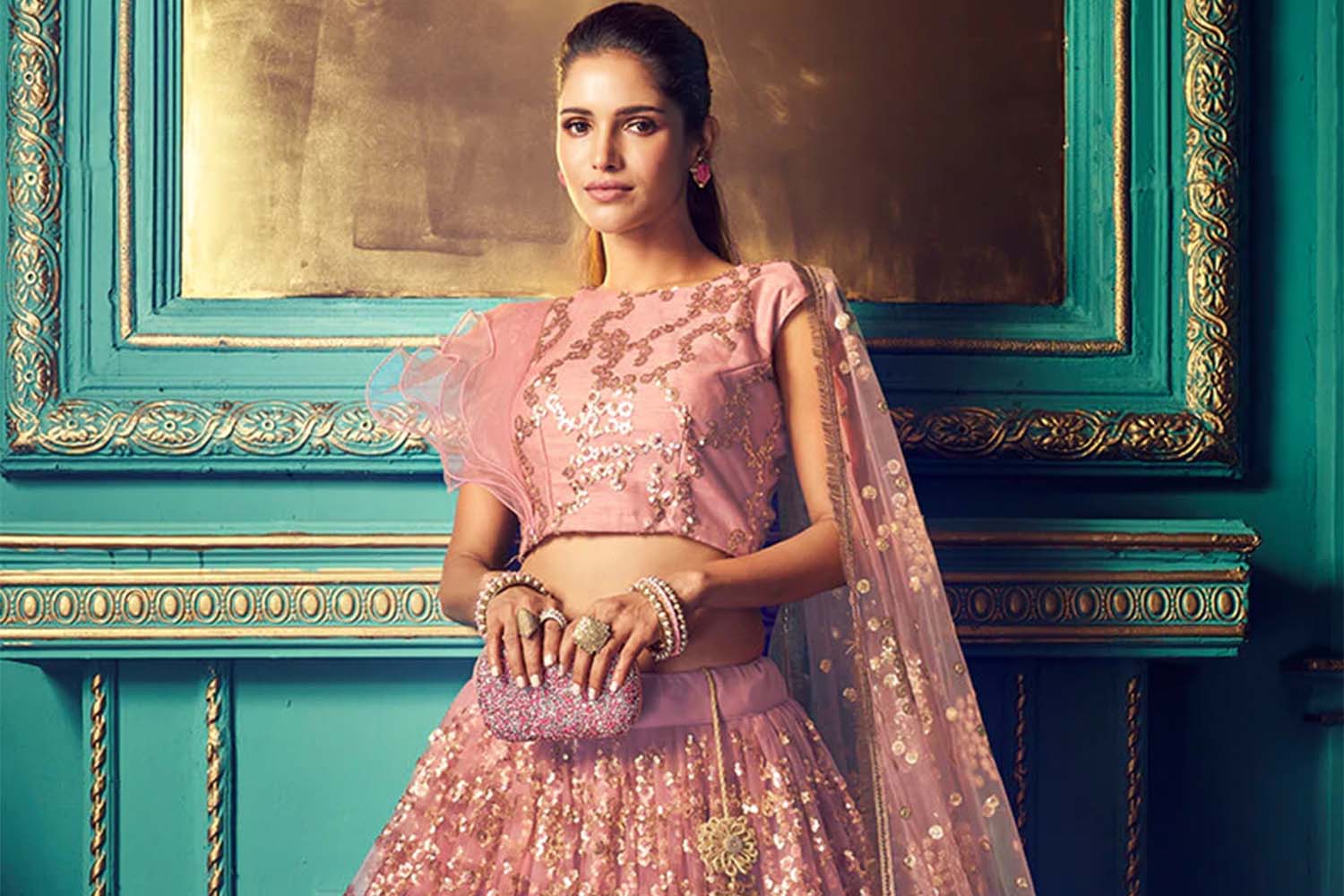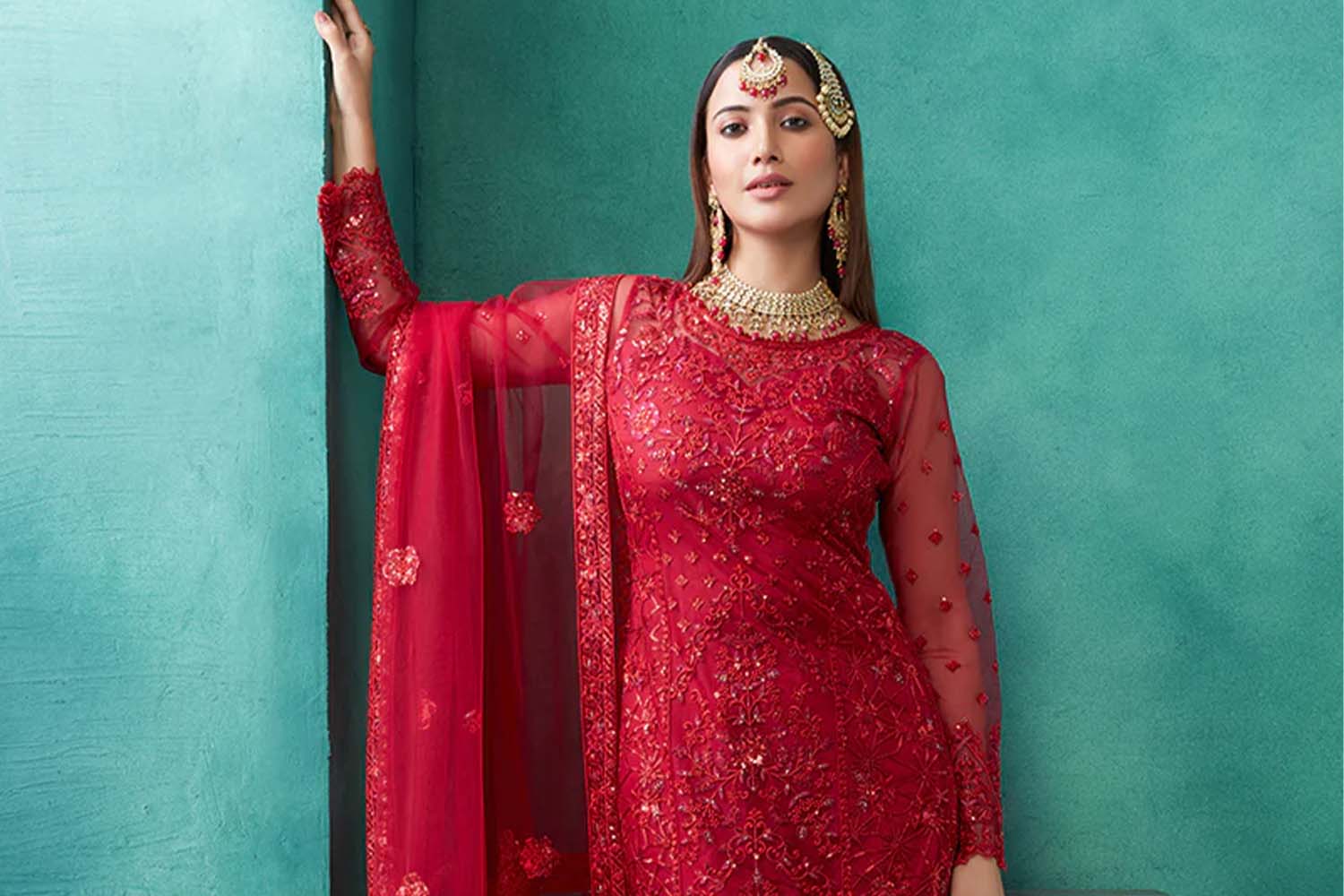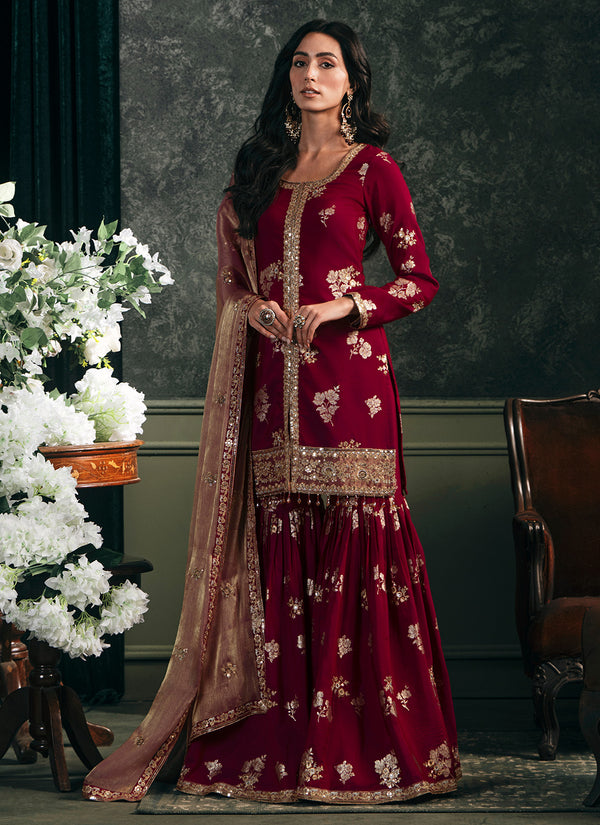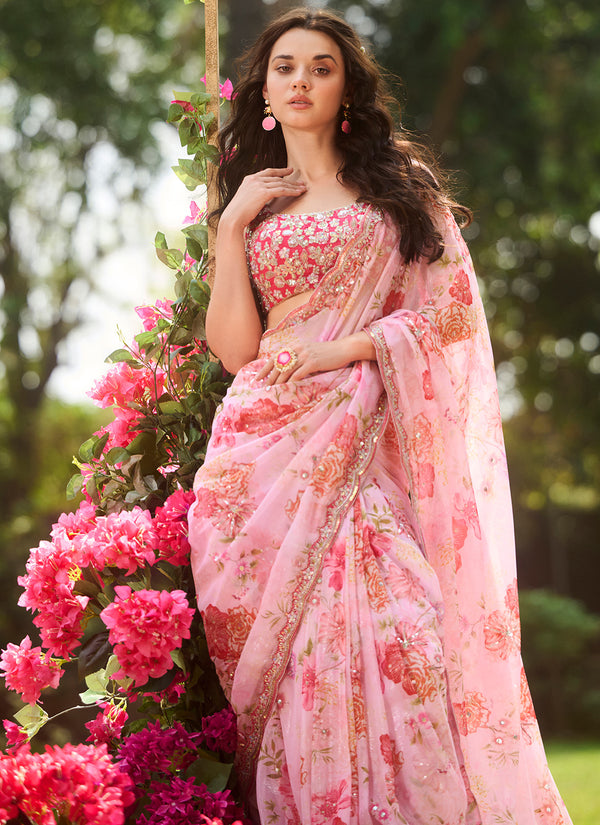
Georgette Sarees: 8 Tips To Take Care of Them
The saree is one of the most significant garments a south Indian woman can own. From childhood coming-of-age ceremonies to weddings and beyond, it follows them throughout young adulthood and well beyond.
A good georgette saree will last for years. An exceptional one may last long enough to be used between generations.
With any article of clothing, two fundamental things are required. First, the attire itself must be high-quality to last. Secondly, the georgette must be taken care of properly.
Lashkaraa is here to help with both of these details. Georgette is a special material, with no two pieces being exactly alike. Despite this, there are some general details that can significantly help improve the lifespan of your georgette sarees.
What Is Georgette?
In contemporary fashion, georgette is one of the go-to materials for sarees. It has become essential to traditional apparel, even though it’s relatively new on the scene compared to other fabrics.
Georgette was first produced in 1915 by a French fashion designer named Madame Georgette de la Plante. She created georgette to produce a material similar to chiffon, but overall better.
Georgette is created by tightly weaving fabric threads together. This creates a puckered look that gives georgette sarees an immediately distinctive shape. It also helps shape the garment to the wearer's body, highlighting the best of their figure. As georgette only refers to the weave, countless materials can create it.
Classical georgette is made from pure woven silk. This provides the piece a gentle luster and a textile strength better than regular fabric. Contemporary georgette can be made from a variety of fibers. Cotton, nylon, and viscose are some of the more popular non-silk opinions.
Depending on the materials, some georgette sarees are partially sheer. This means that for both conservative and risque dressers, many options exist to provide the perfect look.
As a specialized material, georgette also requires specialized care to keep it looking its best. Sarees made from this luxurious material can be quite expensive: With the guide below, you can treasure your saree for years to come.
Tip 1. Know Your Material
The first necessity for taking care of your saree is to know what specific fabric it’s woven from. This tells you how it will respond to heat, sweat, stains, and more. It also affects the appearance of the saree, though that can be seen just by looking at it.
Silk sarees are classic and elegant. Thanks to the way they are blended, they will have rich colors and a delicate shine. Rayon and satin sarees are also noted for their shine, though their durability differs from silk.
Cotton sarees are lightweight and breezy, perfect for spring and summer. They tend to have a more matte appearance than pure silk, though they also take color and embroidery well.
Tip 2. Read Care Instructions Closely
Consider this a continuation of tip one. When you initially purchase your saree, care instructions will likely be provided. If yours was handmade outside a retailer, you might need to research the material in question yourself.
Tip 3. Store Flat
The sari, according to the popular saying, is nine yards long. While this won’t be true of every garment, that is a lot of fabric to drape from a hanger.
Your saree should be stored flat in a cool, dark, dry place. The garment is heavy, and long-term storage on a hanger can damage it. When doing so, wrap it in a moisture-resistant bag or fabric. Choose cotton or muslin fabric over a large plastic bag.
When storing your saree for the long term, your biggest concerns are moisture or pest damage and accidental tearing. To prevent the latter, periodically refold the garment to prevent intense creases. The crepe fabric naturally wants to pucker, but remaining stagnant may damage the material.
Many sarees have extensive embroidery on them. When storing a saree flat, you should make sure that the embroidery is facing inward. This way, it won’t snag on anything else in your closet.
The one exception to this rule is when you are only putting your saree into short-term storage or traveling. Just as with many pieces of formalwear, saree storage covers exist. Such garment bags allow you to place your saree on a hanger and keep it safe from other items in your closet. This can save you room when folding isn't an option.
Regardless of how you store your saree, it should always be gently covered. Tightly wrapped sarees might not look their best when unwrapped. When properly stored, the life of your best saree can last for years, perhaps even becoming a treasured heirloom to pass to the next generation.
Tip 4. Choose Well
Preserving a saree might be a little time-consuming. To make this a little easier on you, choose a high-quality saree you love from a designer you trust.
What types of sarees do you love?
In our opinion, you can never go wrong with an elegant floral saree. For example, the Marigold Floral Georgette Saree has striking, gorgeous marigold-colored fabric with sheer sleeves featuring an elaborate floral print. Delicate zari work and sequins add an enchanting shimmer.
Alternatively, you may want a sari with more understated embellishments, like the Bottle Green Embroidered Georgette Saree. This saree uses a finely worked floral blouse with embellishments on the bodice and cuffs. The bottom, by comparison, features minute sequin embellishments.
Sarees cover every color palette, style preference, and occasion and are truly a wardrobe essential. Every Lashkaraa saree is hand-made and individually inspected. Plus, our sarees are pre-draped so that you can spend less time getting ready and more time celebrating.
Tip 5. Minimize Sunlight Exposure
Long-term exposure to sunlight damages the molecular structure of fabrics, resulting in faded, dulled colors.
There will naturally be times when you wear your saree during the bright daylight hours (with you shining even more brightly than the sun!)
Most importantly, keep it out of the sun when not in use. Store in a dark place, and if you are keeping it out to wear, cover it to dilute light exposure.
Tip 6. Wash According to the Material’s Specifications
The way you wash your saree will depend on the material and embroidery involved. To ensure you are washing properly, we suggest referring back to Tip #2.
As with all hand-made, delicate garments, we suggest either handwashing or seeking the services of a professional. Traditional washers and dryers can be incredibly abrasive. Again, this partially depends on the fabric. Many sarees are best hand-washed, but certain types of silk, like dupioni, must be dry-cleaned.
Generally, the best way to handwash your saree will be by hand in a large basin of cold water. Use the mildest soap possible to avoid color leeching.
Always lean on the delicate side when maintaining your saree. Never tightly wring your saree to get excess water out, as this can damage or cause tears in the fabric.
Tip #7: Always Air Dry
Next, we have a continuation of proper washing etiquette for your saree. Your saree should be air-dried in a place far from harsh sunlight. As stated before, direct sunlight can cause a whole mess of issues for your fabrics.
No matter what, avoid using driers. Dryers can rip and snag fine clothing, especially embroidered elements.
Tip #8: Wash Stains Immediately
With all the food and drink around celebrations you wear sarees at, accidents are bound to happen. While you don’t need to drop everything immediately, you should try your best to attack stains before they set.
More importantly, you should make sure you know what you are doing before approaching any stain. Once water or chemical applications are tried, they often cannot be totally reversed if they bring about negative effects.
White vinegar, talcum powder, and mild detergent are all common household items often used to treat various stains. Assess if any of these work, then apply as needed. Fabric-specific stain cleaners also exist. It helps to have these on hand before stains happen so that you don’t need to make an external trip.
If you are unsure, always seek professional advice!
New Fabric, Traditional Styles
Pairing a millennia-old garment with a 107-year-old silk textile showcases the versatility and universality of the saree style. Georgette elevates the saree by adjusting how our garments are shaped, creating subtle, figure-hugging creases and gentle, iconic drapes.
Georgette is a fabric that takes conscious effort to care for, but the results speak for themselves. The end result is a lavish take on the classic saree. Properly preserved, it’s a take that can last for generations.
Sources:
The History of Sari: The Nine Yard Wonder I Times of India
Where Does the Colour Go When a Material Fades in the Sun? | BBC Science Focus Magazine

